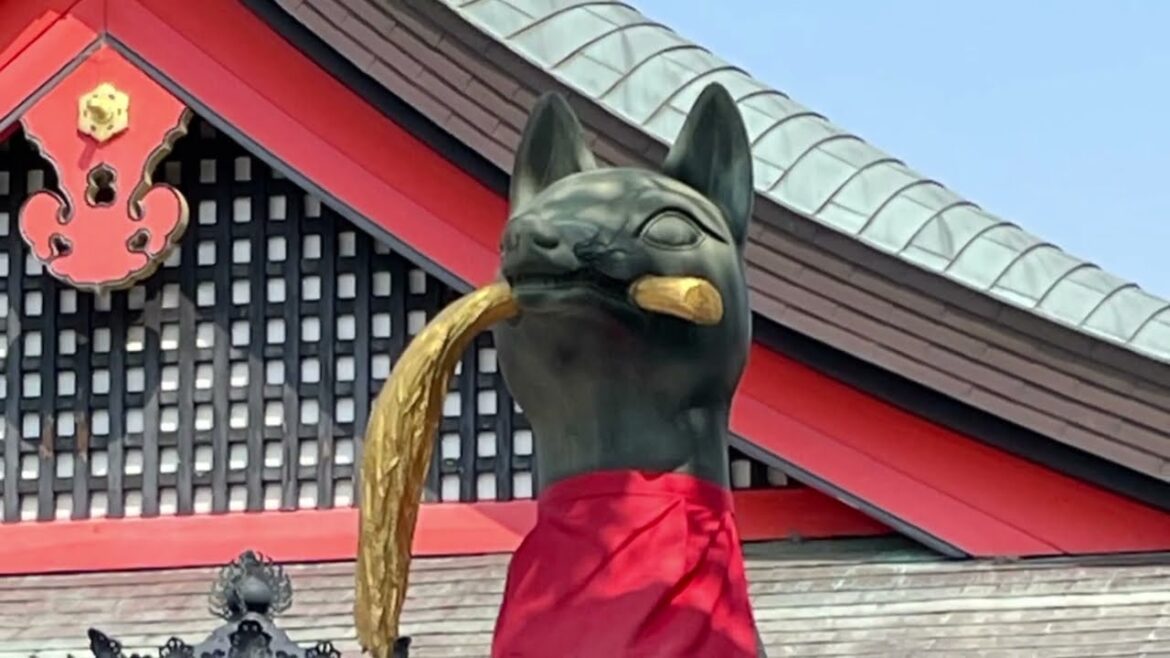Fushimi Inari Shrine Kyoto | Mt. Inari Hike Through Thousands of Torii Gates
[Music] [Music] [Music] When I first stepped under the gates of Fushimi Nari Shrine, I thought it would be just a climb. A trail, photos to look back at, a great view at the top. But with each step, I felt it was more than that. This path carried centuries of faith, gratitude, and hope. It wasn’t sightseeing. It felt like walking into silence, into spirit, into thought. Fushimi Anari has been a sacred place since the year 71. For over a thousand years, people have come here to pray for good harvest, for success in work, for safety at home. The shrine honors Inari, the deity of rice and luck, and the Tory gates mark the line between daily life and sacred space. Passing through one feels like stepping into another world. Most are painted bright red, a color meant to keep away evil and give strength. Along the way, you see statues of foxes called kitsune. The foxes are Inari’s messengers and are central part of Japanese folklore. Many hold keys in their mouth, keys to rice storehouses. Those are symbols of abundance and good fortune. The gates and the foxes together remind you this mountain is more than a hike. It’s a living story. Walking under thousands of gates, I began to see why this climb is called the pilgrimage. The gates close you off from the outside world. No cars, no clock, no distractions. The higher you go, the quieter it gets. The voices fade, the forest takes over. Surrounded by these endless gates, I felt small. And that smallness made space for something greater than myself. Each gate along the path was donated by someone, a family, a shop, a company, a way of saying thank you or asking for luck. Their names are written in black on the gates. And as you pass through, it feels like you’re walking among thousands of hopes. The climb is also said to reflect five virtues of Inari. honesty, patience, diligence, gratitude, and self-control. And with every steep step, you practice at least one of them. Halfway up, I stopped to look out over Kyoto. From that height, the busy city looked so small. That view wasn’t just a reward. It was a reminder that life looks different when you step back, even for a moment. At the top, the gates thin out. The path grows rougher. The forest feels older. And instead of big shrine, you find many small simple ones. Humble, quiet, almost hidden. It isn’t about spectacle. It’s about stillness, about connecting with some something you didn’t know you were missing. A place that feels deeply personal. On the way down, what struck me most was the dedication it took to create this path. Every gate, thousands of them placed here by people across generations. Together, they built not just a trail, but a pathway of hope and devotion. Walking through it, you feel part of something larger. Sharing in the wishes and gratitude of a whole community. For me, the climb became more than exercise. And somewhere between the sweat, the aching legs, and the silence, it became meditation. A lesson in patience, in humility, in endurance. The gates aren’t just wood. There are thresholds. And with each one, it felt like the mountain was asking me, “How will this change you? How will you live differently because of that?” By the end, my answer was simple. Yes, it was worth it. Yes, the views at the top were stunning and the climb made me feel alive. But what I’ll remember most is the quiet it created inside me and the awe I felt standing in the presence of something much bigger than myself. [Music] [Music] [Music]
Join me on a climb up Mt. Inari at Fushimi Inari Shrine in Kyoto, Japan — the famous mountain path lined with thousands of bright red torii gates. In this video, I share what the hike feels like, the history and meaning behind the gates and fox statues (kitsune), and the reflections this sacred path inspires. You’ll also find practical tips on when to go, how to get there, and how to make the most of your visit.
Whether you’re planning a trip to Japan or just curious about one of Kyoto’s most iconic shrines, this walk through Fushimi Inari is more than a hike — it’s an unforgettable experience of culture, spirit, and awe.
Related links:
– Fushimi Inari Website: https://inari.jp/


AloJapan.com